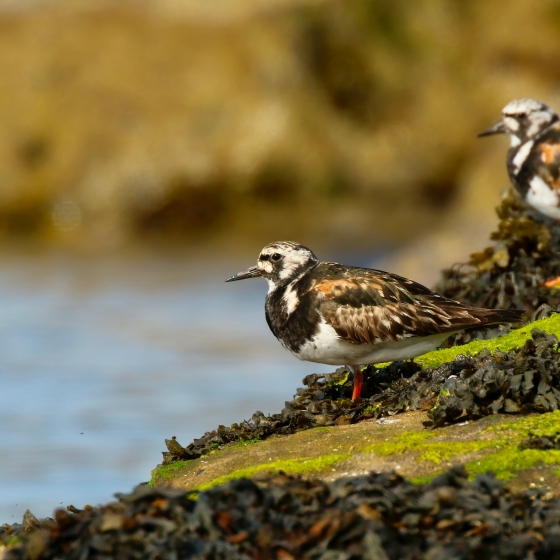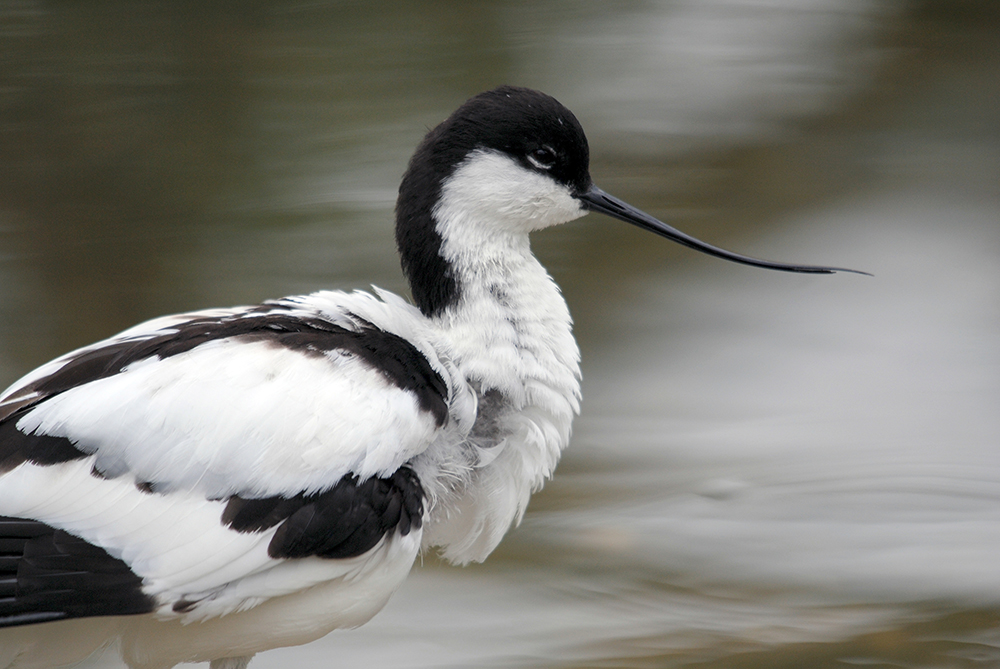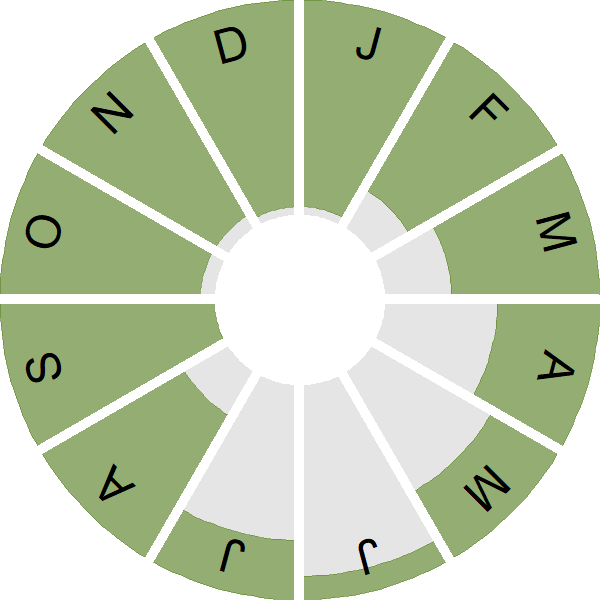Turnstone

Introduction
This colourful wader, its plumage a striking mix of chestnut, black and white, is widespread around our coasts in winter.
Breeding in the Arctic, the Turnstone is primarily a winter visitor; summering birds are usually younger individuals that have not attained breeding condition. The species can be found in any coastal habitat, although has a preference rocky shores.
Turnstones forage on the tideline, flipping over small stones in the search for small crustaceans and insects. But Turnstone are famously indiscriminate in their diet and there is a small sub-genre of the scientific literature enumerating the things they have been recorded eating – from packets of artificial sweetener to decomposing corpses!

Key Stats
Identification
Songs and Calls
Call:
Flight call:
Status and Trends
Conservation Status
Population Change
The UK is a key wintering site for Turnstone from the Greenlandic and east Canadian breeding populations and is also used by breeders from the Siberian and Scandinavian breeding populations on spring and autumn passage [Holt et al. 2015]. The number wintering in the UK has declined since the mid 1980s, but that decline has levelled off and the recent trend appears to be relatively stable.
Distribution
Turnstone winter on sandy beaches, estuaries and rocky shores. They are widespread and occupy most coastal 10-km squares of the UK.
Occupied 10-km squares in UK
or view it on Bird Atlas Mapstore.
or view it on Bird Atlas Mapstore.
European Distribution Map
Distribution Change
The Turnstone winter distribution has expanded by 9% across Britain & Ireland since the early 1980s, with increases most notable in southwest Ireland, northwest Scotland, and at a few inland sites in Britain.
Change in occupied 10-km squares in the UK
or view it on Bird Atlas Mapstore.
Seasonality
Turnstones are mostly passage migrants and winter visitors but small numbers can be seen throughout the year, although none breed.
Weekly pattern of occurrence
The graph shows when the species is present in the UK, with taller bars indicating a higher likelihood of encountering the species in appropriate regions and habitats.

Movement
Britain & Ireland movement
Foreign locations of birds ringed or recovered in Britain & Ireland
Dots show the foreign destinations of birds ringed in Britain & Ireland, and the origins of birds ringed overseas that were subsequently recaptured, resighted or found dead in Britain & Ireland. Dot colours indicate the time of year that the species was present at the location.
- Winter (Nov-Feb)
- Spring (Mar-Apr)
- Summer (May-Jul)
- Autumn (Aug-Oct)

European movements
EuroBirdPortal uses birdwatcher's records, such as those logged in BirdTrack to map the flows of birds as they arrive and depart Europe. See maps for this species here.
The Eurasian-African Migration Atlas shows movements of individual birds ringed or recovered in Europe. See maps for this species here.
Biology
Productivity and Nesting
Nesting timing
Egg measurements
Clutch Size
Survival and Longevity
Survival is shown as the proportion of birds surviving from one year to the next and is derived from bird ringing data. It can also be used to estimate how long birds typically live.
View number ringed each year in the Online Ringing Report.
lifespan
Survival of adults
Biometrics
Wing length and body weights are from live birds (source).
Wing length
Body weight
Ring Size
Classification, names and codes
Classification and Codes
- Order: Charadriiformes
- Family: Scolopacidae
- Scientific name: Arenaria interpres
- Authority: Linnaeus, 1758
- BTO 2-letter code: TT
- BTO 5-letter code: TURNS
- Euring code number: 5610
Alternate species names
- Catalan: remena-rocs comú
- Czech: kamenácek pestrý
- Danish: Stenvender
- Dutch: Steenloper
- Estonian: kivirullija
- Finnish: karikukko
- French: Tournepierre à collier
- Gaelic: Trìlleachan-beag
- German: Steinwälzer
- Hungarian: koforgató
- Icelandic: Tildra
- Irish: Piardálai Trá
- Italian: Voltapietre
- Latvian: akmentartinš
- Lithuanian: paprastoji akmene
- Norwegian: Steinvender
- Polish: kamusznik (zwyczajny)
- Portuguese: vira-pedras / rola-do-mar
- Slovak: kamenár strakatý
- Slovenian: kamenjar
- Spanish: Vuelvepiedras común
- Swedish: roskarl
- Welsh: Cwtiad Traeth
- English folkname(s): Tanglepicker, Flipbrick, Sea Dotterel
Research
Causes of Change and Solutions
Causes of change
The decline in the numbers of Turnstone seen in the UK since the mid 1980s has been linked to distribution shifts in the British wintering grounds towards breeding grounds in northeast Canada / Greenland. The shifts are thought to be a result of changes in climate, particularly increasing mean rainfall [Rehfisch et al. 2004]; however the study was unable to conclude whether the decline in numbers in the UK was purely a result of a redistribution of birds to different wintering grounds or a population decline at the flyway level. International count data suggest that the population trend for Turnstone that breed in northeast Canada and Greenland is stable [BirdLife International 2024].
Publications (1)
Consequences of population change for local abundance and site occupancy of wintering waterbirds
Author: Méndez, V., Gill, J.A., Alves, J.A., Burton, N.H.K. & Davies, R.G.
Published: 2017
Protected sites for birds are typically designated based on the site’s importance for the species that use it. For example, sites may be selected as Special Protection Areas (under the European Union Directive on the Conservation of Wild Birds) if they support more than 1% of a given national or international population of a species or an assemblage of over 20,000 waterbirds or seabirds. However, through the impacts of changing climates, habitat loss and invasive species, the way species use sites may change. As populations increase, abundance at existing sites may go up or new sites may be colonized. Similarly, as populations decrease, abundance at occupied sites may go down, or some sites may be abandoned. Determining how bird populations are spread across protected sites, and how changes in populations may affect this, is essential to making sure that they remain protected in the future.
20.09.17
Papers


